
|
Built through the Second World War (1941-45) in 18 different shipyards, the Liberty Ship was a quickly assembled, relatively cheap, austere cargo ship. At a top speed of 11 knots, they were slow running, with an obsolete 19th century vintage reciprocating triple expansion (3 cylinder) 2500 hp steam engine directly driving the sinle propeller shaft. Two watertube boilers supplied steam to the engines as well as steam powered cargo winches and steering apparatus. Unfortunately, the ships had problems with hull fractures and welding cracks. The need for a faster, safer transport vessel was onvious. Cargo ships with modern steam turbines that could outrun U-boats were designed but the first one was not completed until February 1944. This was the Victory Ship. Here is how to tell the difference: |
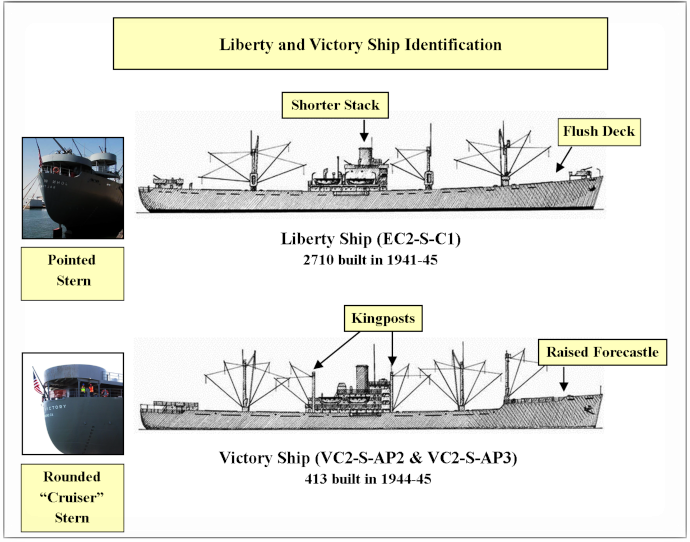 |
|
And here is a comparison of the ships'
specifications: |
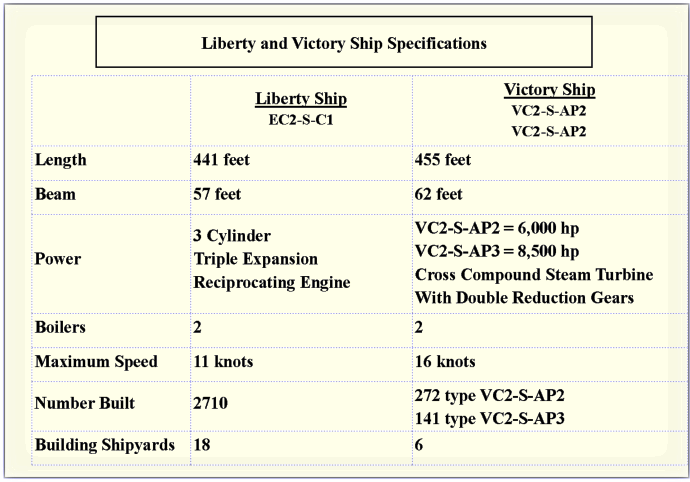 |
|
Victory ships were built in five
different basic configurations: |
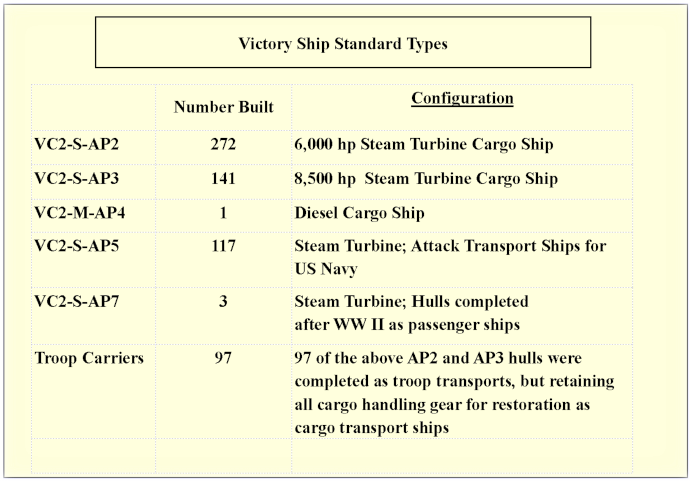 |
 Cross section profile of Liberty Ship (EC2-C1) SS Jeremiah O'Brien.  Cross section of a typical Victory class (VC2-S-AP2 & VC2-S-AP3) cargo ship. 
Liberty Ship SS John W. Brown
(left) is a museum ship at Baltimore.
At right SS American Victory at Tampa. |
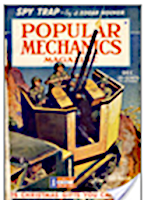 This short announcement in the December 1943
issue of Popular Mechanics magazine heralds the then new Victory class
vessels about to begin mass production. As production increased at West
Coast and Maryland shipyards construction time decreased to 5-8 weeks
and dockside "fitting out" before delivery in 3-5 weeks per ship. This short announcement in the December 1943
issue of Popular Mechanics magazine heralds the then new Victory class
vessels about to begin mass production. As production increased at West
Coast and Maryland shipyards construction time decreased to 5-8 weeks
and dockside "fitting out" before delivery in 3-5 weeks per ship.Two water tube boilers furnished steam to the high and low pressure propulsion turbines. These drove the propeller shaft through a double reduction gearbox. A pair of steam powered turbo generators furnished 120 and 240 volt ship's service DC power. Cargo and lifeboat winches were electrically powered. The hydraulic steering was similar to that on Liberty Ships, but utilized elecro-hydraulic rams to move the rudder rather than steam operated pistons. Sea trials proved that the new class of cargo ships were faster than expected. Cruising at up to 17 knots, only two were lost to enemy submarines during WWII, partly because of the decrease in sub activity late in the war. |
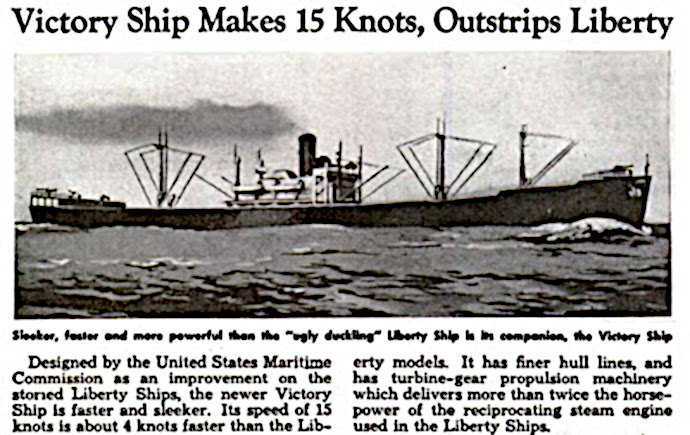
|
|
|
Today, just three
Victory Ships remain afloat, all museum ships, open to the public.
|